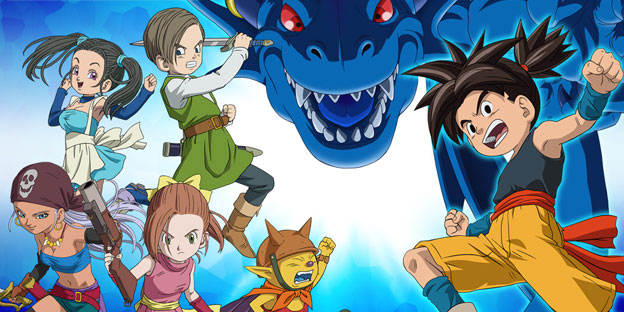When I was first getting into gaming, the JRPG was my gateway drug. Games like Parasite Eve, Final Fantasy VII, and Chrono Trigger influenced me greatly during these formative years and kept me glued to my PlayStation. Now, fifteen years later, much has changed. Graphics are sharper, there is more variety in the gaming landscape, and more people are identifying themselves as gamers than ever before. But, to my dismay, the JRPG has all but evaporated. Why is this, and how did it happen? I have a few theories.
One of the things my younger self appreciated about the genre was its familiarity. Picking up a JRPG, I knew exactly what to expect. However, my appreciation for all things similar has diminished over the years, which is probably true for much of the gaming community.
Unfortunately, the JRPG genre is one that hasn’t evolved well. These days, you see too many franchises that implement too little too late (see the Final Fantasy series) or franchises that try to do so much that they overwhelm fans (see White Knight Chronicles). A JRPG is not like a shooter or platformer where new locations and new guns or power-ups are enough to make fans sit up and take notice. You’ve got to tweak the formula just enough to keep things interesting, but not too much as to change the guts of the genre. It’s a very difficult balance to strike, and one I think many developers are not quite sure how to tackle.

It has been done in the past though. Games like Blue Dragon, Lost Odyssey, Disgaea 3, and Star Ocean IV are examples of modern JRPGs that have been done well. But these are exceptions to the rule, and, when you are looking at a genre that has fallen precipitously from the public eye in recent years, fans can’t help but be disappointed by a mere one or two decent releases per year.
Another issue with JRPGs is that they seem to have lost their focus. Back in the good old days, gamers mainly played RPGs for their deep and engaging stories. Fans of the genre can retell the story of Persona 3 or Final Fantasy X without any trouble at all, but if you ask them what happened in Final Fantasy XIII or Resonance of Fate, you might get a few pauses. Though developers have been working hard to try and make quasi-turn-based battle systems exciting, they have forgotten that it is a compelling story that draws players into a truly great JRPG.
Of course, we can’t place blame solely on developers. The world has changed quite a bit since the 1990s. Players are more interested in quick six-to-eight-hour shooters with expansive online modes, and they don’t necessarily want to commit to sprawling JRPG that could last forty hours or more and will require tons of grinding, side-questing, and party development. Yet the action RPG is quite popular, and series like Mass Effect, Dragon Age, and The Elder Scrolls have proven that there are still plenty of gamers out there who crave an immersive experience. However, when you compare these action-oriented Western RPGs with more traditional endeavors, it’s easy to see why JRPGs are all but forgotten in today’s market.
So is this the end of the JRPG as we know it? Well, not exactly. It seems that console-based JRPGs might be all but finished, but there are some ways that this genre can come back to life. In fact, it may have found new life on handheld platforms, as games like Devil Survivor, Blue Dragon, and the Persona remakes have been stellar sellers on both Nintendo and Sony handhelds. Continuing to release high-quality JRPGs on a more mobile platform makes costs lower for both consumers and developers, and is a great way to get out games that would easily cost double or triple the amount they would normally if they were given the high-def treatment and shipped on discs.

Another great option is to make JRPGs in bite-sized downloadable packages. Episodic content may lend itself more immediately to action games, but I believe that it can be done with JRPGs pretty effectively. If developers can get a story together that gets players hooked, I don’t see why this formula couldn’t be applied to JRPGs to help spread out costs to developers and give fans an easy way to experience their favorite genre.
JRPGs are still trickling out of Japan, but their volume has shrunk so much that it’s hard to get excited when fans have almost nothing to look forward to year after year. There are plenty of reasons why this is happening, but the good news is that it isn’t too late for this genre. JRPGs have already found new life on handheld platforms, but fans could see a return to consoles if developers can commit to telling a memorable story, incorporate modern elements without losing their way, and use some interesting distribution strategies to make these games less expensive to produce. I’m sure there is still a market for these games, so the ball is really in the developer’s court. Let’s hope they’re ready to hit it back.
*The views expressed within this article are solely the opinion of the author and do not express the views held by Cheat Code Central. This week’s is also purely a work of fiction*
